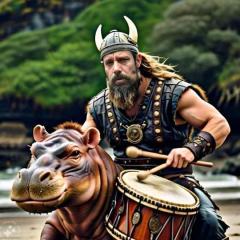Testing the ice maker in a KitchenAid refrigerator
Water is available, the water dispenser works normally.Although built together, water dispenser and Ice Maker valves work independent of each other. One side could fail while other is working normally. Also the ice maker itself must call for the water, so even if water is available that doesn't mean the ice maker is calling for it. Jump ports L and V to energize valve. Also using the test ports on the module will help you far more than disassembling the ice maker.
All resistance checks must be done with power disconnected from the icemaker or whole appliance!
- Testing for voltage between test points L and N should measure 120 volts if the icemaker is receiving power. Note: On some models power is disconnected from the icemaker whenever the door is opened.
- Testing for resistance between test points L and H will check the icemaker's mold heater (~72 ohms).
- Testing for resistance between L and M will check the motor resistance (~4400 - 8800 ohms).
- Testing for resistance between V and N will check the resistance of the external water valve solenoid coil (~300 ohms).
- Testing for resistance between T and H should show continuity (zero resistance) if the icemaker's internal bimetal thermostat is closed. It will read infinite resistance if open. Testing for voltage should show 0 volts if the icemaker's internal thermostat is closed, 120 volts if the thermostat is open... and the icemaker is getting power. Note: The internal icemaker thermostat will only be closed if the icemaker is and has been below 15°F for some time.
A 14 gauge insulated (except for 1/2" on each end) preferably solid-wire can be used as a jumper to initiate functions of the icemaker unit.
Testing on a 'live' appliance can be dangerous! Anyone unfamiliar with proper safety precautions should not attempt it.
- Jumping between T and H will simulate the closing of the internal thermostat. It will initiate a harvest cycle, powering the icemaker motor and the mold heater. Remove the jumper after 3 seconds and icemaker should continue to run. Note: If the jumper is not removed before the ice ejector blades reach the 10:00 o'clock position, the water valve will not be energized and the icemaker will not fill.
- Jumping between M and N should power the icemaker motor.
- Jumping between L and V should energize the water valve.
- Jumping between H and N should energize the ice mold heater.
Source: KitchenAid ice maker quit, looking for troubleshooting help








0 Comments
Recommended Comments
There are no comments to display.